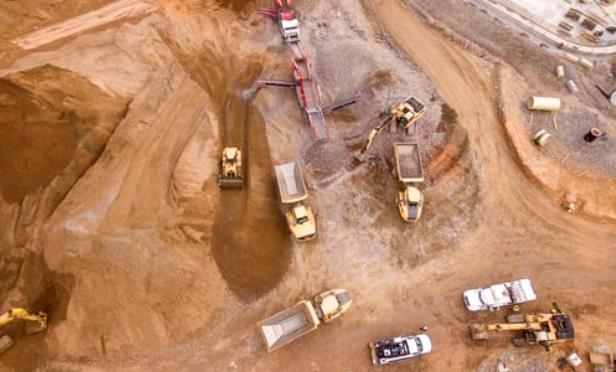 At year end 2019, Houston and Dallas were top metros for industrial construction (credit: Shane McLendon).
At year end 2019, Houston and Dallas were top metros for industrial construction (credit: Shane McLendon).
DALLAS/HOUSTON—Developers completed construction of 289 million square feet of industrial and logistics real estate in the United States last year, but any concerns of oversupply were tempered as only 39% of space in new construction was available. That was a major factor in vacancies staying near all-time lows in 2019, according to a CBRE year-end report.
"With national vacancy at 4.4%, it was becoming difficult for occupiers to find modern space," said James Breeze, CBRE global head of industrial and logistics research. "This new supply is needed and will keep transaction activity strong, especially for larger deals."
Deliveries outpaced the 255 million square feet of new absorption, but with leasing from occupiers, especially e-commerce and retail firms that often require modern building design and amenities, supply and demand dynamics remained active. A vacancy rate of less than 50% is considered healthy for newly delivered industrial properties.
At year end, Dallas-Fort Worth continued to be one of the strongest industrial markets in the country with 25 million square feet in new industrial space delivered to the market last year. Nearly 75% of that space was leased.
"Though 2019 was another strong year for industrial leasing, it's worth noting that pre-lease rates for industrial product under construction are softening in DFW," said Steve Berger, senior vice president with CBRE in Dallas.
Another major factor contributing to the strong absorption of new construction last year was the increase in built-to-suit development. This segment made up 28.1% of new construction activity, as companies increasingly need unique requirements to meet specific demands.
In markets with more than 4 million square feet of new development, Dallas-Fort Worth was the strongest core market, with nearly 75% absorbed of the 25 million square feet completed in 2019. By the final days of 2019, Houston had absorbed 10 million square feet of industrial space, says Nathan Wynne, vice president with CBRE.
"We've had a good long run of several years with an uptick on large-scale developments and build-to-suits focused on consumer goods and retail," he tells GlobeSt.com.
In the top five submarkets with significant development activity last year, North Fort Worth was number one with 12 million square feet under construction out of a total 23.5 million square feet under construction. Southeast Houston was number five with 4.7 million square feet under construction out of a total 17.7 million square feet under construction.
"During this pandemic, we are optimistic that online sales will continue to go up," Wynne tells GlobeSt.com. "People who weren't spending as much online prior to the sheltering will do more as we get back to normalcy. We're early in the process so it is too early to tell how it will play out. Certainly business has slowed because we can't tour buildings. I would think manufacturing will take a hit and distribution will be slow during Q2 and Q3 but we'll have a lot of pent-up demand by Q4. It's tough to predict; it might only be a couple of months, but eventually distribution will get back to normal. To Houstonians, the price of oil is a talking point and there are concerns over it dipping, but the low price of oil is a good thing outside of Texas. Because of our diverse economy, this will not be a major concern."
© Touchpoint Markets, All Rights Reserved. Request academic re-use from www.copyright.com. All other uses, submit a request to [email protected]. For more inforrmation visit Asset & Logo Licensing.







